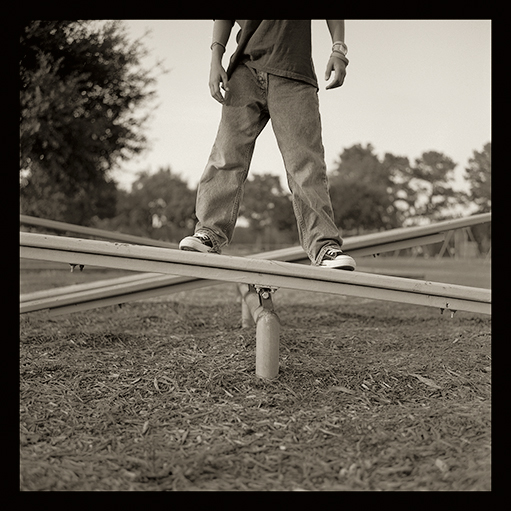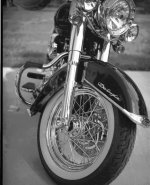T
- Forums
- Rangefinder Forum
- Image Processing: Darkroom / Lightroom / Film
- Film / Developing / Chemistry
You are using an out of date browser. It may not display this or other websites correctly.
You should upgrade or use an alternative browser.
You should upgrade or use an alternative browser.
Whats going on here...
- Thread starter Todd.Hanz
- Start date
- Latest activity Latest activity:
- Replies 18
- Views 2K
T
Todd.Hanz
Guest
BTW, I'm using Vue Scan on an old Epson 2450.
Todd
Todd
maddoc
... likes film again.
Looks like something I would call "jpeg-artifacts". Just a guess, the scanner can't resolve small details and seems to merge them into areas of similar grey tones.
When I set the contrast to high in my scans I get similar results (either with the scanner software or later, when adjusting contrast in PS)
When I set the contrast to high in my scans I get similar results (either with the scanner software or later, when adjusting contrast in PS)
Chriscrawfordphoto
Real Men Shoot Film.
It isn't jpeg artifacts, it is posterization caused by doing too big of a curves and/or levels adjustment to an 8-bit file. Scan in 16-bit and it won't happen again.
maddoc
... likes film again.
It isn't jpeg artifacts, it is posterization ...
That was the word I was looking for, "posterization" 🙂 I think you explained it very well, Chris.
Siluro
Member
Yep, definitely posterisation.
Can also (and more likely in my opinion) be caused by tone curves/levels being adjusted too far away from what the scanner actually captured from the film.
What adjustments did you make on the 'Color' tab in Vuescan?
Can also (and more likely in my opinion) be caused by tone curves/levels being adjusted too far away from what the scanner actually captured from the film.
What adjustments did you make on the 'Color' tab in Vuescan?
T
Todd.Hanz
Guest
I tried 16 bit and the results are the same, Color tab has been set to white Balance, None, etc. same results...frustrating for sure.
Todd
Todd
Chriscrawfordphoto
Real Men Shoot Film.
Some of the old Epsons could only do 8 bit scans, no matter what options appear in Viewscan. Try the Epson software and see if 16 bit is an option. If not, you may not have gotten a real 16 bit scan from Viewscan. If that's it, you will need a better scanner for good results.
T
Todd.Hanz
Guest
Would love a better scanner! But this one has made better scans in the past...


thanks for the replies and suggestions, it may be time to plunk down some cabbage for a new one.
Todd


thanks for the replies and suggestions, it may be time to plunk down some cabbage for a new one.
Todd
Gabriel M.A.
My Red Dot Glows For You
I tried 16 bit and the results are the same, Color tab has been set to white Balance, None, etc. same results...frustrating for sure.
I own an Epson 2450, and although I haven't used it in years, I remember having a similar problem: there's something odd about how the scanner "adjusts" the image when you don't have the image holder just right.
Are you using the original film holder, or are you using something else? I do not know for sure at all, but my experience tells me that the scanner adjusts certain gamut or resolution settings depending on the type of holder (it determines this optically) and the type of film you tell it to scan.
This would happen often when I would scan in "Transparent" + "Positive" (e.g. "slide"). It's almost always been a pain to scan color slides.
I'm betting you're trying to perform a "RAW" scan (aka Transparent + Positive).
Gabriel M.A.
My Red Dot Glows For You
Oh, one last thing: that could also be the result of improperly-set Color Space settings; perhaps your film has more gradients than the colorspace you're trying to use. You could be double-profiling (if you use Windoze, it is very easy for this to happen), where you tell the software one colorspace to use, and you've told the operating system to assign another by default (right-click on your scanner, select properties, and then a window with a "Settings" or "Color Space" should be there; remove anything set in there, if it is)
Sometimes, if you've reinstalled certain software, or even used a different USB port, Windoze will pretend to know better and undo your previous settings and set what it, in its Infinite Wisdom, thinks is the only good thing for you. You know, like those guys who go into certain brand threads and bash away predictably 😀
Sometimes, if you've reinstalled certain software, or even used a different USB port, Windoze will pretend to know better and undo your previous settings and set what it, in its Infinite Wisdom, thinks is the only good thing for you. You know, like those guys who go into certain brand threads and bash away predictably 😀
T
Todd.Hanz
Guest
I'll try those settings when I get home Gabriel, BTW I'm on a Mac...not PeeCee running "Windoze" 😉.
Todd
Todd
venchka
Veteran
Todd,
You're welcome to try out my ancient Epson 1680 to see if your scanner really is at fault. A friend of mine has an Epson 4990 that I'm sure you could test drive as well.
I am surprised. I have always admired your scanning efforts.
Good luck.
Wayne
You're welcome to try out my ancient Epson 1680 to see if your scanner really is at fault. A friend of mine has an Epson 4990 that I'm sure you could test drive as well.
I am surprised. I have always admired your scanning efforts.
Good luck.
Wayne
aad
Not so new now.
Todd, that effect has happened when the exposure was off and the scanner software had to adjust too much. 16 bits might fix it, but I think the realproblem was the original may be too low in contrast?
W
Way
Guest
Try 16 bit and turn off all adjustments from Vuescan. Use Photoshop to do your adjustments later.
T
Todd.Hanz
Guest
Thanks for all the comments and ideas, it looks to me like the scanner is getting worse from day to day, the scans almost look solarized. It could be the light source is failing, time to upgrade for sure.
Wayne,
I appreciate the offer, that's what I love about this place! I'm going to try a few more tweaks and then start looking for another scanner soon.
thanks guys,
Todd
Wayne,
I appreciate the offer, that's what I love about this place! I'm going to try a few more tweaks and then start looking for another scanner soon.
thanks guys,
Todd
venchka
Veteran
Holler when you want to test drive my scanner in the Hood or the 4990 in Katy.
photophorous
Registered User
Sorry if this is an obvious suggestion, but make sure your digital ICE (or whatever it's called in Vuescan) is not turned on. Sometimes dust removal can cause screwy results like that with B&W.
Good luck,
Paul
Good luck,
Paul
shadowfox
Darkroom printing lives
Todd, sorry to be blunt, but your photos are too good not to be scanned by a healthy and decent scanner. I think you're right, time for a new one.
Nikon Coolscan V ED is still the best bang for the buck for 35mm. For MF/LF, I've been happy with the Microtek Scanmaker i800.
Nikon Coolscan V ED is still the best bang for the buck for 35mm. For MF/LF, I've been happy with the Microtek Scanmaker i800.


